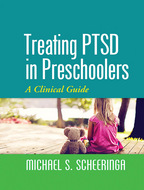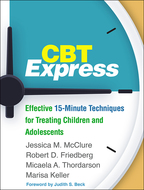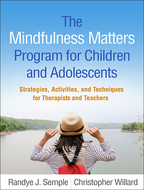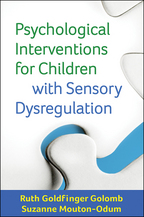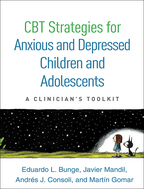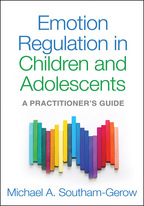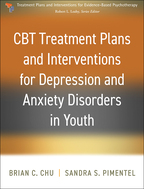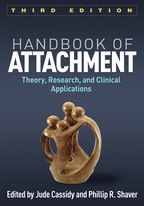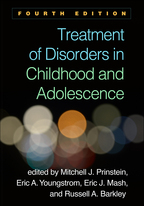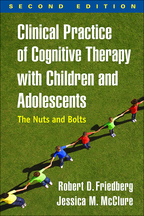Treating PTSD in Preschoolers
A Clinical Guide
Michael S. Scheeringa
A Paperback Originale-bookprint + e-book
A Paperback Original
orderOctober 7, 2015
ISBN 9781462522330
Price: $43.00 222 Pages
Size: 8" x 10½"
Sign up for emails on upcoming titles on Trauma & PTSD (with special discounts)!
The reproducible materials can be downloaded and printed in PDF format.
The reproducible materials can be downloaded and printed in PDF format.
“The twelve sessions of PPT are each clearly laid out with defined goals, tasks to accomplish, and homework to complete before the next session….Among the most valuable components of the PPT manual are the case examples and sample dialogues that occur among the therapist, the child, and the caregiver.”

—School Social Work Journal
“This is a well-thought-out, carefully detailed treatment protocol, presented in a manualized fashion. The treatment provider is provided with clear, step-by-step instructions as well as helpful hints to deal with probable resistance and other foreseeable challenges. Scheeringa makes a good case for the presence of preschool PTSD and also provides an excellent rationale to provide treatment even at such a young age.”

—Child and Family Behavior Therapy
“Tackling the challenge of how to conduct CBT for PTSD with young children, this practical manual provides a detailed treatment overview, clearly defined goals and objectives for each session, and user-friendly guidance for conducting sessions. The section chock full of clinical worksheets is a boon to clinicians.”

—Lisa Amaya-Jackson, MD, MPH, UCLA-Duke National Center for Child Traumatic Stress, Duke University School of Medicine
“Scheeringa walks the clinician through 12 sessions that combine purposeful, well-researched techniques with developmental awareness. New and seasoned therapists alike will welcome the clear direction facilitated by worksheets and handouts. Mastery of this material will help therapists with the arduous task of effectively helping young children struggling with the consequences of trauma.”

—Victor G. Carrión, MD, Director, Stanford Early Life Stress and Pediatric Anxiety Program at Lucile Packard Children's Hospital, Stanford University
“This compelling book is written by one of the true pioneers in the field of trauma in very young children. Scheeringa provides a very readable guide to his theory-driven manualized protocol based on CBT. Practitioners will particularly love the step-by-step instructions, many case examples, discussions of specific clinical challenges, and downloadable child and parent worksheets.”

—Markus A. Landolt, PhD, Professor and Head of Pediatric Psychology, University Children’s Hospital Zurich, Switzerland
“Scheeringa has provided us with a brilliant, easy-to-use manual, complete with excellent examples that include the voices of therapists, children, and parents. His detailed 'how-to' instructions are grounded in theory, research, and extensive experience working with young children after trauma. This book should be in the hands of all clinicians working with young children and their caregivers.”

—Alison Salloum, PhD, LCSW, School of Social Work, University of South Florida
“Scheeringa has almost single-handedly established the empirical study and diagnosis of PTSD in preschool children; the inclusion of a preschool PTSD diagnosis in DSM-5 is largely due to his foundational work. Years of clinical experience have been distilled into this highly accessible volume, which assumes little background knowledge and is backed by theory and careful empirical study. Scheeringa carefully explains both how to conduct assessments and therapy with traumatized young children and why to follow the structure he has outlined. Each section is illustrated with clear examples drawn from extensive real-world experience. I cannot exaggerate the value of this book to anyone who works with young children exposed to trauma—it will be the clinical manual of choice for this population for many years to come.”

—Richard Meiser-Stedman, PhD, DClinPsy, Department of Clinical Psychology, University of East Anglia, United Kingdom
—School Social Work Journal
“This is a well-thought-out, carefully detailed treatment protocol, presented in a manualized fashion. The treatment provider is provided with clear, step-by-step instructions as well as helpful hints to deal with probable resistance and other foreseeable challenges. Scheeringa makes a good case for the presence of preschool PTSD and also provides an excellent rationale to provide treatment even at such a young age.”
—Child and Family Behavior Therapy
“Tackling the challenge of how to conduct CBT for PTSD with young children, this practical manual provides a detailed treatment overview, clearly defined goals and objectives for each session, and user-friendly guidance for conducting sessions. The section chock full of clinical worksheets is a boon to clinicians.”
—Lisa Amaya-Jackson, MD, MPH, UCLA-Duke National Center for Child Traumatic Stress, Duke University School of Medicine
“Scheeringa walks the clinician through 12 sessions that combine purposeful, well-researched techniques with developmental awareness. New and seasoned therapists alike will welcome the clear direction facilitated by worksheets and handouts. Mastery of this material will help therapists with the arduous task of effectively helping young children struggling with the consequences of trauma.”
—Victor G. Carrión, MD, Director, Stanford Early Life Stress and Pediatric Anxiety Program at Lucile Packard Children's Hospital, Stanford University
“This compelling book is written by one of the true pioneers in the field of trauma in very young children. Scheeringa provides a very readable guide to his theory-driven manualized protocol based on CBT. Practitioners will particularly love the step-by-step instructions, many case examples, discussions of specific clinical challenges, and downloadable child and parent worksheets.”
—Markus A. Landolt, PhD, Professor and Head of Pediatric Psychology, University Children’s Hospital Zurich, Switzerland
“Scheeringa has provided us with a brilliant, easy-to-use manual, complete with excellent examples that include the voices of therapists, children, and parents. His detailed 'how-to' instructions are grounded in theory, research, and extensive experience working with young children after trauma. This book should be in the hands of all clinicians working with young children and their caregivers.”
—Alison Salloum, PhD, LCSW, School of Social Work, University of South Florida
“Scheeringa has almost single-handedly established the empirical study and diagnosis of PTSD in preschool children; the inclusion of a preschool PTSD diagnosis in DSM-5 is largely due to his foundational work. Years of clinical experience have been distilled into this highly accessible volume, which assumes little background knowledge and is backed by theory and careful empirical study. Scheeringa carefully explains both how to conduct assessments and therapy with traumatized young children and why to follow the structure he has outlined. Each section is illustrated with clear examples drawn from extensive real-world experience. I cannot exaggerate the value of this book to anyone who works with young children exposed to trauma—it will be the clinical manual of choice for this population for many years to come.”
—Richard Meiser-Stedman, PhD, DClinPsy, Department of Clinical Psychology, University of East Anglia, United Kingdom

